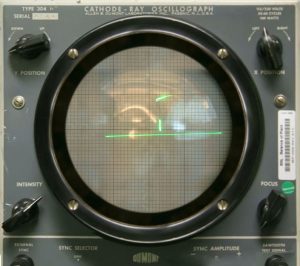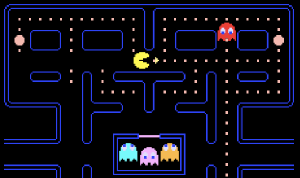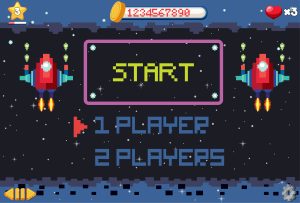We hear game localization quite often now, especially if you are interested in the gaming sector. There are many game localization companies that only focus on this area. But when exactly did developers start localizing their games? How did they start their localization journey? Why did they feel the need to add different language versions to their games? Who was the pioneer in game localization? Let’s dive deeper into the history of game localization.
Everybody knows about video games; children play games on their tablets, adults spend hours in front of a computer, and even many among the elderly enjoy their gaming time. But when did it get so popular and common to immerse yourself in a fictional world?
 Video games are not that old. They started to emerge in the second half of the 20th century. The first ever video game is considered to be a tennis game made by physicist William Higinbotham. You can see how the game looked on the right.
Video games are not that old. They started to emerge in the second half of the 20th century. The first ever video game is considered to be a tennis game made by physicist William Higinbotham. You can see how the game looked on the right.
Yet it wasn’t until the 1970s with the emergence of arcade games that video games became increasingly popular. I am sure you have heard of arcade games such as Space Invaders and Pacman. They were quite popular in the American market, but guess what? They were originally manufactured in Japan! Let’s briefly examine the early eras of video game localization.
As we said before, this was the decade of arcade games, and two of the most famous games played in arcades were of Japanese origin. So, how did Pacman, for example, come to the US and dominate the life of teenagers? The answer is simple: localization.

Game localization worked the same way it works now. Japanese developers wanted to expand into new markets to maximize their revenues. They saw the success and popularity of arcades in the US, and they wanted to get their share as well. Yet they couldn’t just ship their game into the US as it was, they had to capture them somehow. So, they decided to utilize localization.
One of the first examples of game localization is the game I am sure we all know, Pacman, originally Pakkuman. First, it was localized as Puck-Man, but because it resembled a curse word in English, they changed it to Pacman when shipping the game to the US. Pacman was a huge success in the American market.
Localization was getting more and more common but it was still extremely simple. The developers were aware that they needed to put their games out there in different languages, but they also didn’t want to bother with all of the details. So, they opted for a type of localization that was quite common back in the day: box and docs localization. This meant that the in-game content of the game was still in the original language, but the packaging and documents related to the game were localized into the target language so that it would sell more easily in the target market.
Another game we are all very familiar with, Super Mario Bros, was distributed this way. Even this tiny effort proved to be extremely beneficial and increased revenues. This is also the decade when the term E-FIGS was coined. English, French, Italian, German, and Spanish were the most common languages developers chose for localization.
When developers saw that even box and docs localization did wonders for their games, they started to increase their efforts by localizing more content. User interfaces and titles were now being localized, and subtitles were being introduced. This helped not only those who didn’t understand the language but also the deaf community. In story-driven games, even if the in-game content was not localized, having subtitles helped players understand the story, and thus increased player loyalty and playing time.

As the amount of video games increased, the number of players increased with it. Some players are quite loyal to their games, but some want to try out as many games as they can, and most of the games get “old” before they can even reach a hundred players. For example, Pacman has been around for more than four decades, whereas most games today don’t even live to see a few years. This is why it is getting increasingly important that developers put their games out in different languages at the same time. This type of simultaneous distribution is called the Sim-Ship model. Most developers opted for this model in the 2000s. This opened a whole new world for localization because it meant that developers released the localized versions along with the original one at the same time.
The gaming market globally reached US$ 202.7 billion in 2022. It is a huge sector, and both developers and publishers value game localization more than ever. Recently, developers have been paying attention to completely localizing their games: changing the titles, the names of the characters, the names of the locations, and even the plotline!
Game localization is not a choice anymore, it’s a necessity. If developers want to reach new markets and be long-lasting, they need to invest in proper game localization.
Written by
Ecenaz Batur
Marketing Specialist
Looking for getting tailored solutions for your game localization projects? Let’s open up a whole new world together!